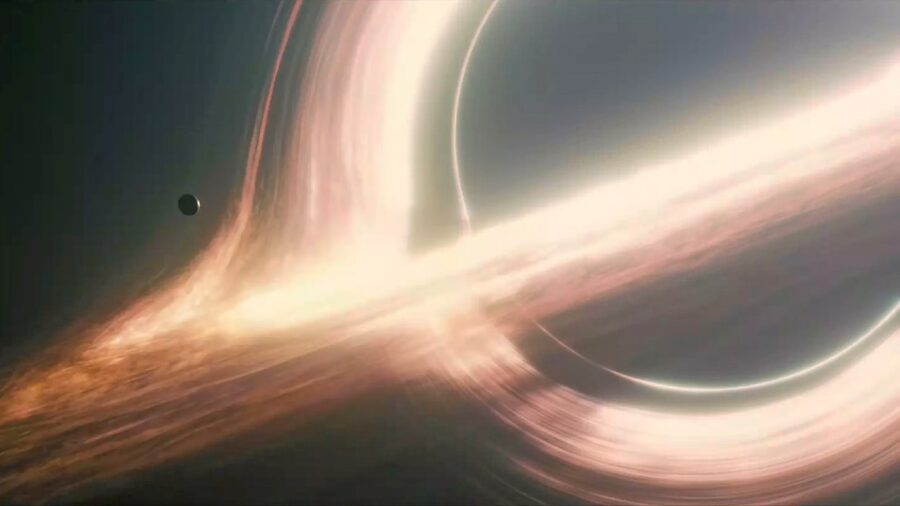Supermassive Black Hole Spotted Moving Between Galaxies
A supermassive black hole has been spotted passing through several galaxies at high speed.

New electrifying scientific discoveries can often cause a buzz within the scientific community, and these discoveries like the recent advancements in how to tell time can have an impact on how scientists theorize about specific concepts. Another recent finding might have large ramifications on how scientists study black holes. According to an article from Science News, a supermassive black hole has been moving through a number of galaxies at an alarming rate.
The findings were initially reported by Yale University scientist Pieter van Dokkum and his team. The shape immediately stood out to van Dokkum “Whatever it is, we haven’t seen it before,” said van Dokkum, before adding “Most astronomical objects are shaped like a spiral or a blob. There are not many objects that are just a line in the sky.” He continued: “We considered a lot of explanations, and the one that fit the best is what we’re witnessing is a massive object, like a black hole, moving very rapidly away from the galaxy,”
Astronomer Charlotte Angus believes the findings are important for confirming theories within the topic of black hole research. “The possibility that this might be due to a supermassive black hole that’s been ejected from its galaxy is very exciting. These events have been predicted by theory, but up until now, there’s been little evidence for them.”

Both scientists believe that this could prompt researchers to go back into the archives and look for similar black hole streaks or patterns. With 25 years of Hubble images, they believe that although the images had not been searched with the purpose of finding the streaks previously, a new lookover with this intention specifically could lead to further findings.
There are a number of possible explanations for this kind of movement in a supermassive black hole. One idea is that after two galaxies come together, the black holes that they’re structured around also merge, and sometimes this can result in the new black hole getting propelled out of the galaxy at a high trajectory. Another theory is that it could even be a result of three galaxies coming together. This can lead to one of the galaxies getting jettisoned out and streaking through the cosmos.
The anomaly was first recorded when van Dokkum and colleagues were observing dwarf galaxies using the Hubble Space Telescope. After their initial findings, scientists revisited the event using the Keck Observatory in Hawaii. Scientists will want to continue observing this system with additional telescopes like the James Webb Space Telescope to confirm that it really is an ejected supermassive black hole, although this seems like the most likely possibility based on the image and theories surrounding the shape of what’s been spotted.
Scientists believe (based on the images) that the streak is roughly about 200,000 light-years away and was part of a galaxy whose light would take about eight billion years. It is estimated at 20 million times the mass of the Sun and moving at a speed of 3.5 million mph.
Although black holes on their own are invisible, as black holes move so too do some of the stars and gas that were gravitating towards them, which will emit radiation strong enough for telescopes to detect. In their movements, black holes can also cause the creation of new stars as the gas that they interact with compresses, and this is also visible using a telescope. This is why when scientists have viewed the event, it has appeared as a line on telescope images as opposed to the far more familiar spiral or blob shapes they’re used to seeing.
The findings might be able to confirm longstanding theories about how supermassive black holes interact and operate in relation to one another. The idea that a supermassive black hole could be ousted from its galaxy is something that scientists have theorized but until now had not seen.












